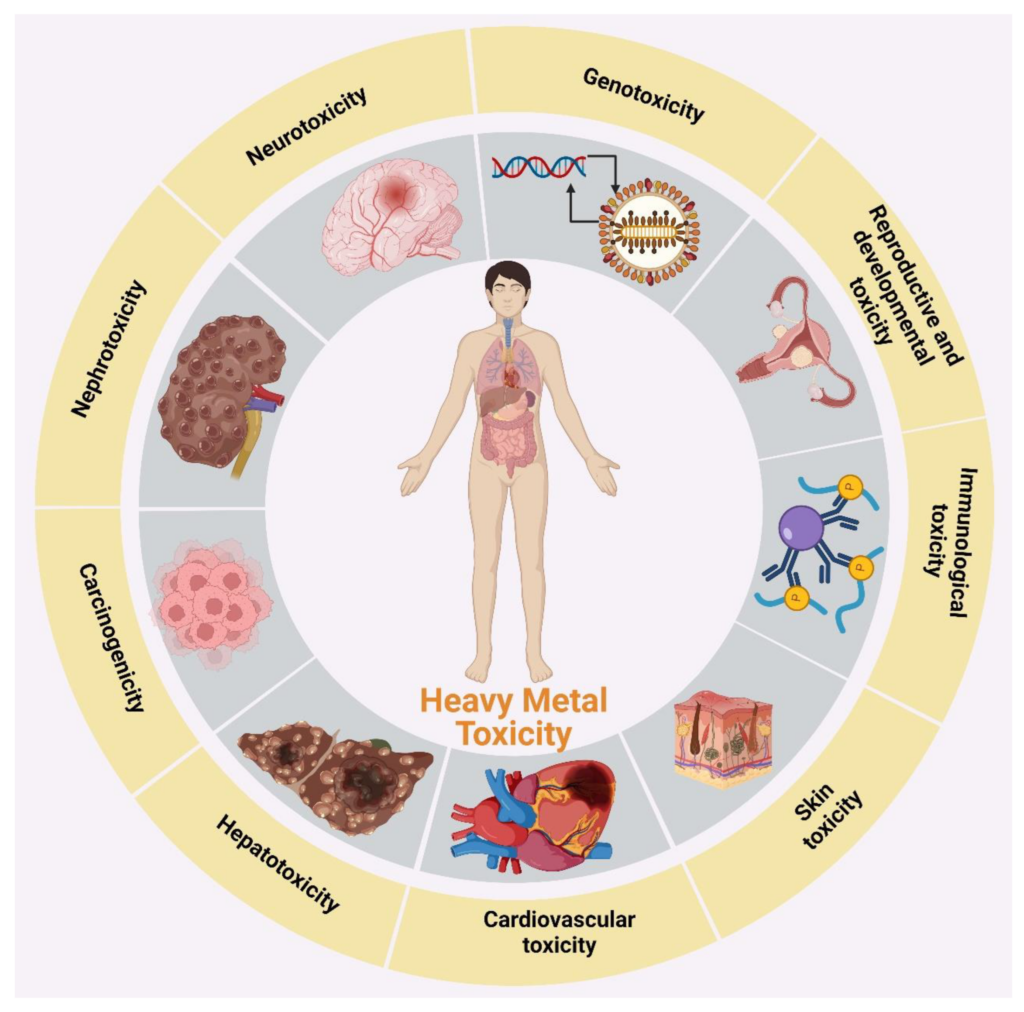Introduction: The Invisible Threat on Your Plate
You carefully choose organic produce, avoid processed foods, and prioritize nutrition—but what if hidden dangers lurk in your meals? Heavy metals like lead, arsenic, cadmium, and mercury silently contaminate staple foods, from rice and lentils to chocolate and protein powders.
Unlike food poisoning, which causes immediate symptoms, heavy metal toxicity builds up over time, leading to chronic diseases, cognitive decline, and organ damage. The worst part? Many of us are unaware of how these toxins enter our food and bodies.
This article uncovers:
✔ How heavy metals sneak into everyday foods
✔ The alarming health risks—especially for children & pregnant women
✔ Practical ways to reduce exposure
✔ FSSAI regulations and why they matter
Let’s dive in.
How Do Heavy Metals Enter Our Food?
1. Contaminated Soil & Water
- Industrial waste, mining, and pesticides deposit lead, arsenic, and cadmium into farmland.
- Rice, grown in waterlogged fields, absorbs 10x more arsenic than other grains.
- Sewage water used for irrigation adds nickel, chromium, and mercury to crops.
2. Agricultural Practices
- Phosphate fertilizers contain cadmium, which accumulates in soil over decades.
- Pesticides & fungicides introduce copper, lead, and arsenic into produce.
3. Food Processing & Packaging
- Low-quality protein powders, spices (like turmeric), and chocolate often contain alarming levels of lead & cadmium.
- Storing acidic foods (tomatoes, citrus) in aluminium or non-stick cookware can leach metals into meals.
Health Risks: Why Should You Care?

Heavy metals don’t just pass through your body—they accumulate in organs, causing long-term harm.
Short-Term Effects
- Fatigue, headaches, digestive issues
- Numbness or tingling in hands/feet
Long-Term Dangers
✔ Brain Damage – Lead lowers IQ in children; arsenic impairs memory.
✔ Cancer – Cadmium & arsenic are Group 1 carcinogens (WHO).
✔ Kidney & Liver Failure – Metals overload detox organs.
✔ Weakened Bones – Cadmium displaces calcium, increasing fracture risk.
Most Vulnerable Groups
- Pregnant Women: Metals cross the placenta, risking miscarriage & developmental delays.
- Children: Even low lead exposure causes ADHD & learning disabilities.
- Elderly: Toxin buildup worsens dementia & osteoporosis.
Top Contaminated Foods & Safer Alternatives
| High-Risk Food | Heavy Metals Found | Safer Swap |
|---|---|---|
| White rice | Arsenic, lead | Basmati rice (lower arsenic), quinoa, millets (washed) |
| Protein powders | Lead, cadmium, mercury | Plant-based (pea, hemp), tested brands |
| Dark chocolate | Cadmium, lead | Brands with published heavy metal tests |
| Turmeric powder | Lead (adulteration) | Fresh turmeric root |
| Leafy greens | Cadmium (from soil) | Organic, thoroughly washed greens |
Related read: How to Choose a Clean Protein Powder
6 Ways to Reduce Heavy Metal Exposure
1. Soak & Rinse Grains & Legumes
- Soaking rice overnight cuts arsenic by up to 80% (discard soak water).
- Always rinse lentils before cooking.
2. Diversify Your Diet
- Rotate grains (oats, barley, quinoa) to reduce dependency on rice.
- Choose low-mercury fish (sardines, salmon) over tuna.
3. Check Certifications
- Look for FSSAI-approved, USDA Organic, or heavy-metal tested labels.
- Avoid supplements with “natural flavors” or proprietary blends.
4. Filter Your Water
- Use NSF/ANSI 53-certified filters to remove lead & arsenic from tap water.
- Learn more at NSF International
5. Cook Safely
- Avoid aluminium/non-stick cookware for acidic foods.
- Use stainless steel, cast iron, or glass.
6. Support Natural Detox
- Eat detoxifying foods: cilantro, garlic, selenium-rich nuts (e.g., Brazil nuts).
- Sweat regularly via exercise or sauna.
Want a detox meal plan? Read our Gentle Gut Cleanse guidelines.
FSSAI Regulations: Are Your Foods Safe?
India’s Food Safety and Standards Authority (FSSAI) sets maximum residue limits:
- Lead: ≤ 0.2–0.3 mg/kg
- Arsenic: ≤ 1.1 mg/kg (rice)
- Cadmium: ≤ 0.1 mg/kg (pulses)
Non-compliance penalties:
- Fines up to ₹10 lakhs
- License cancellation for repeat violations
- Mandatory recalls of unsafe food
Yet, enforcement remains inconsistent—making consumer awareness and brand scrutiny essential.
Final Thoughts: Knowledge = Power
You can’t eliminate heavy metals, but smart choices drastically cut risks:
✔ Read labels and choose certified brands
✔ Wash, soak, and rotate staple foods
✔ Use clean water and safe cookware
Your health is worth the extra step. Begin today—one informed meal at a time.
Further Reading on Foodnwellness
References
- WHO (2023). Arsenic in Rice and Public Health Risks
- FSSAI (2024). Heavy Metal Limits in Food
- Clean Label Project (2024). Protein Powder Contamination Report
- Journal of the American Heart Association (2023). Heavy Metals & Heart Disease



